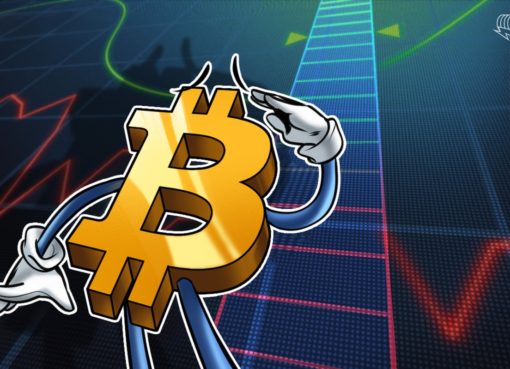SPACs have been an increasingly popular option for companies looking to go public, especially during the global slowdown caused by the coronavirus pandemic. But what are SPACs and why is everyone talking about them?
A special purpose acquisition company (SPAC) is a newly created shell company formed by a group of investors known as “sponsors.” Sponsors raise funds for the SPAC through an initial public offering (IPO), a process in which a stake or an entire private company is publicly sold to institutional and retail investors in the form of shares (“stock” is also used interchangeably). A share is a unit of ownership in a public company.
The first SPACs were established in the early 1990s, but they’ve surged in popularity over recent years, with an increasing number of companies seeking faster ways to go public than an IPO.
Most companies that have passed through IPOs have commercial operations, i.e., they provide some forms of products and/or services. Think about Apple, Facebook, Amazon – these are all public companies that were initially private but at some point went public. The shares of public companies are traded on special venues called stock exchanges, e.g., the New York Stock Exchange (NYSE), or over-the-counter (OTC) stock markets, which represent networks of stock dealers.
Unlike regular public companies, however, a SPAC has no commercial operations when it conducts its IPO. This is why SPACs are also referred to as “blank check companies.” In other words, they do nothing. The primary goal of a SPAC is simply to raise capital and then use that cash to acquire an existing private company that shows significant promise and is looking to go public. These private firms are also known as “target companies.”
How a SPAC works
As a rule, a SPAC IPO structure consists of common shares merged with a warrant. The latter is a contract that gives the holder the right to buy more shares at a fixed price at a later date. Exercising the warrant is one of the opportunities investors try to leverage.
Most SPACs price their IPO shares at $10 apiece while the warrant exercise price tends to be around 15% higher than the IPO price.
A SPAC typically has two years to acquire or merge with a private company after completing its IPO. If it fails to do so, the SPAC is dissolved and all funds are returned to shareholders who participated in the IPO. Note that a SPAC may or may not reveal which private company it plans to acquire or merge with during its IPO process.
If a SPAC does successfully merge with a private firm, it swaps the cash it raised during the IPO and the status of a public company for a stake in the resulting business.
Differences of a SPAC, an IPO and a direct listing
Despite the success of SPACs, some companies opt for different methods to go public. For example, Coinbase recently debuted on the Nasdaq exchange via a direct listing, which is another fast-track method to become a publicly traded company rather than an IPO.
Here are the main differences of all three approaches:
SPAC
- Companies seeking the support of a SPAC go public via merging or being acquired by the SPAC.
- Going public through SPACs is easier and faster than IPOs. There is less regulatory scrutiny and the target company is not required to provide detailed financial information.
- The fees are higher than direct listings because SPAC sponsors are interested in profiting from the deal.
- Investors in the SPAC IPO may not know about the target company and the price.
IPO
- Companies going public via IPOs are supported by major Wall Street institutions that have a wealth of experience in the space and help to value the company fairly.
- New shares are created and sold to investors.
- IPO firms have to pay considerable fees to underwriters (banks that provide guarantees to investors).
- Companies going through IPOs have to host roadshows to promote their business to prospective investors.
- There is more regulatory scrutiny during an IPO, including the filing of additional underwriter contracts.
- Investors know the ins and out of an IPO firm thanks to financial disclosures.
- Often, there is a post-IPO lock-up period during which the company’s employees cannot sell the stock.
Direct listing
- In a direct listing, the company sells shares directly to investors, without intermediaries, underwriters and roadshows.
- Unlike in IPOs and SPACs, companies going public through direct listings don’t issue new shares but sell existing, outstanding shares.
- Direct listings are best suited to well-established businesses that have a strong market presence and do not require the support of intermediary financial firms to promote them.
- Companies going public through direct listing pay much lower fees compared to IPOs and SPACs.
- There is no lock-up period on shares sold during a direct listing.
Why are SPACs needed at all?
SPACs are all about speed and convenience. For operational businesses with assets, conducting an IPO is an arduous process, especially during a pandemic.
Companies have to think about the roadshow and employing underwriters – usually investment banks – to promote the public offering to prospective investors. Unsurprisingly, working with investment banks is expensive and time-consuming as additional contracts need to be filed with the financial authorities.
To avoid this, many companies, especially smaller private firms, decide to merge with SPACs and become publicly traded companies in as little as three to four months. This compares to an IPO, which can take anywhere from six months to over a year to complete.
Risks of going public via a SPAC
It’s worth mentioning that merging with SPACs has drawbacks as well. One of the main issues is that the post-merger business may not perform as expected. The Financial Times cited Refinitiv data showing that of the 13 SPACs announced acquisitions in May, only one was trading above $10.
Another issue for companies opting for this route is making sure all regulatory and legal filings are communicated before the SEC deadlines. Because SPAC mergers are typically much quicker than IPOs, post-SPAC companies have a shorter window to file all necessary documentation.
SPACs in the crypto market
SPACs have also become attractive for blockchain and cryptocurrency firms that plan to go public. In this way, blockchain companies can avoid the rigorous scrutiny of an IPO.
- Bakkt: The Intercontinental Exchange-backed company that operates a bitcoin futures trading platform, announced at the beginning of the year that it would go public by merging with SAPC VPC Impact Acquisition Holdings. The deal values Bakkt at over $2 billion.
- Bitfury’s Cipher Mining Technologies: Merged with Good Works Acquisition Corp.
- Diginex: Merged via a SPAC with 8i Enterprises.
All in all, SPACs have been booming over the last couple of years. Stock investors called 2020 the year of the SPAC because the blank check firms raised an impressive $83.4 billion, more than in all the previous years combined. However, it took only three months in 2021 to surpass that level and update the annual record.
As of mid-May, SPAC Research data shows that U.S. SPACs have exceeded the $100 billion mark of raised funds since the beginning of 2021. This is also more than the $30 billion that IPOs of regular companies have raised during the same period.
Looking ahead, trading platform provider eToro, which lists cryptocurrencies as well, said it plans to go public by merging with SPAC FinTech Acquisition Corp. V later this year, in a $10.4 billion deal.




